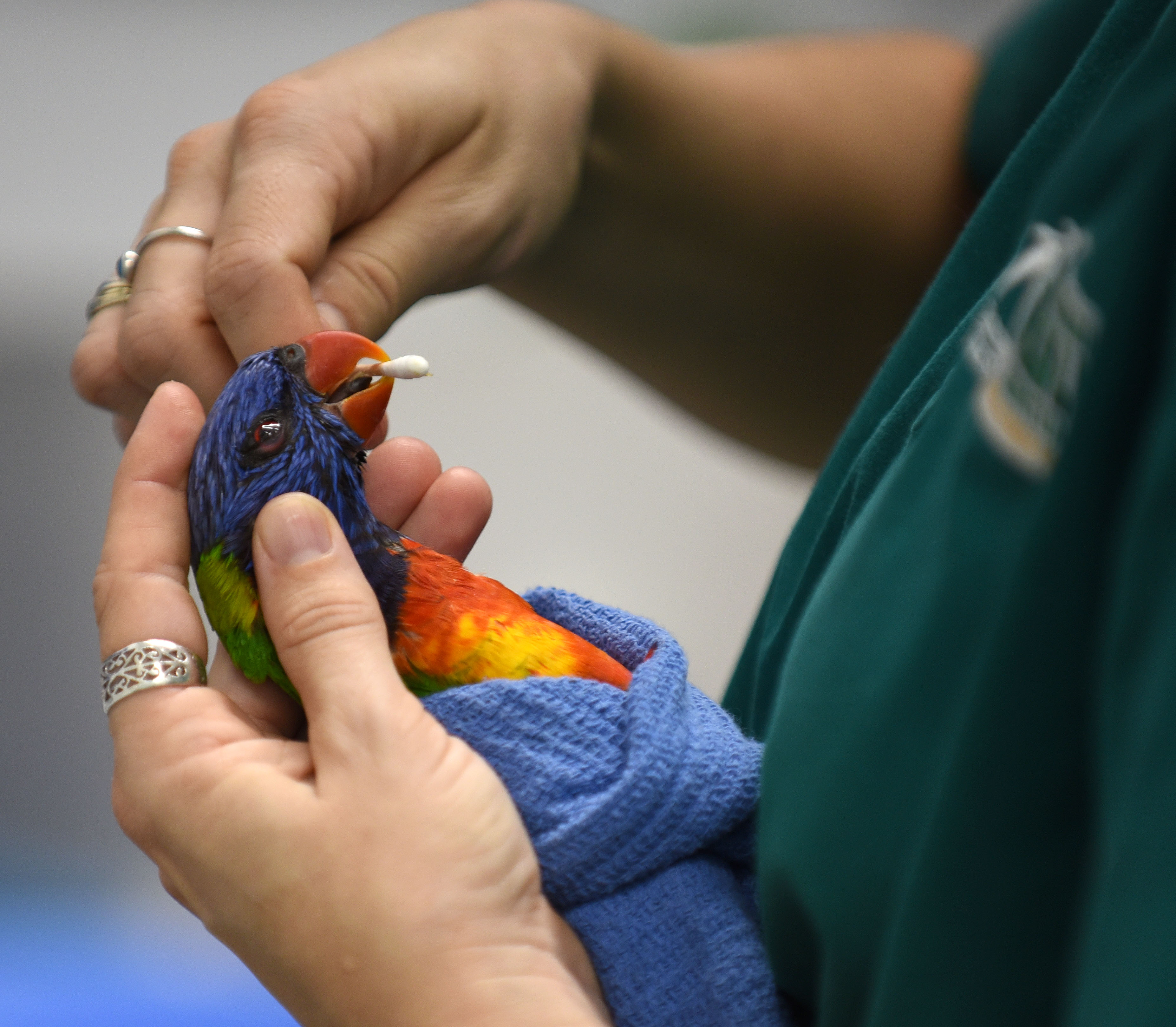National Bird Week!
National Bird Week kicked off on the 17th of October with the goal of inspiring people to take action and get involved in bird conservation efforts. It’s also a time to reflect on the thousands of sick, injured, and orphaned native birds that are admitted into Currumbin Wildlife Hospital each year.
Rainbow Lorikeets are sadly our highest admitted patient. There were 2, 440 cases last year at Currumbin Wildlife Hospital alone. Lorikeets are admitted for several reasons including various head trauma, vehicle hits, fractures, and Lorikeet Paralysis Syndrome to name a few.
Fortunately, many of these patients can be released back into the wild thanks to the efforts from the vet team at Currumbin Wildlife Hospital along with the fantastic network of carers.
There are many ways that you can support birds:
- Grow bird-friendly native Australian plants in your garden that provide food or shelter
- Keep an eye on your pets by keeping them indoors or using a leash
- Understand when a baby bird should be brought into Currumbin Wildlife Hospital
Spring and summer are the busiest times for baby bird admissions at Currumbin Wildlife Hospital. It’s important to know when a baby bird should be brought into hospital for treatment, to avoid mistakenly removing a healthy bird from its environment.
If you come across a baby bird that you think might need help, call Currumbin Wildlife Hospital or your local wildlife rescue group. They will ask you questions about the bird and advise whether it needs to be brought in for treatment.
When you call, make sure you provide an exact location of where the bird was found. This information is required so that Currumbin Wildlife Hospital’s vet staff can reunite the baby bird with its mum in the wild.
Help us save our feathered friends this National Bird Week!

